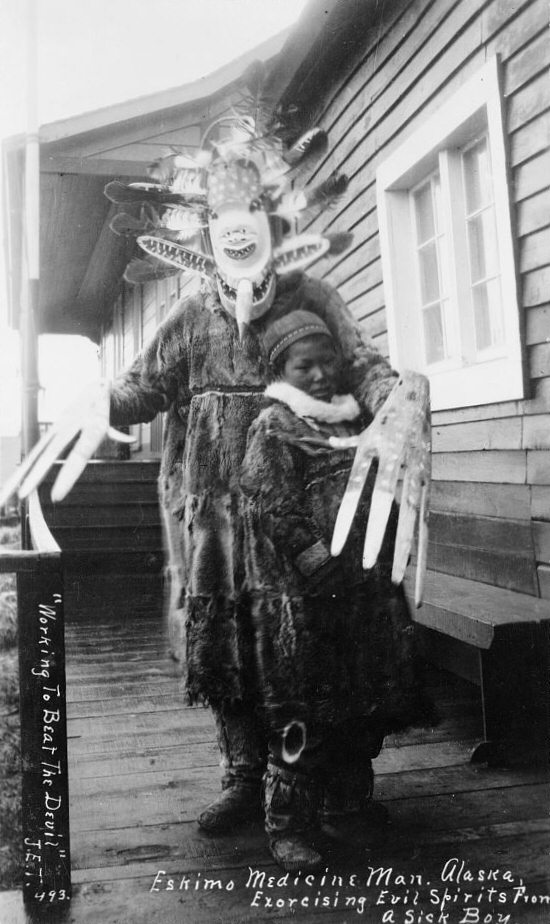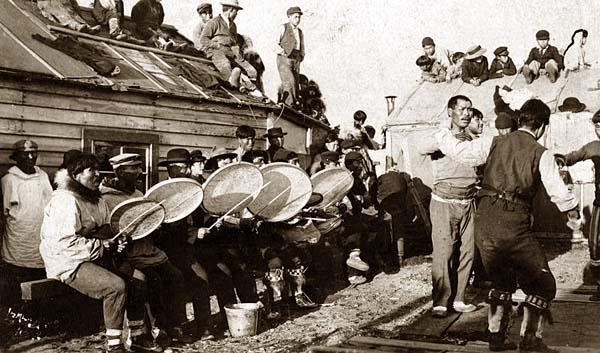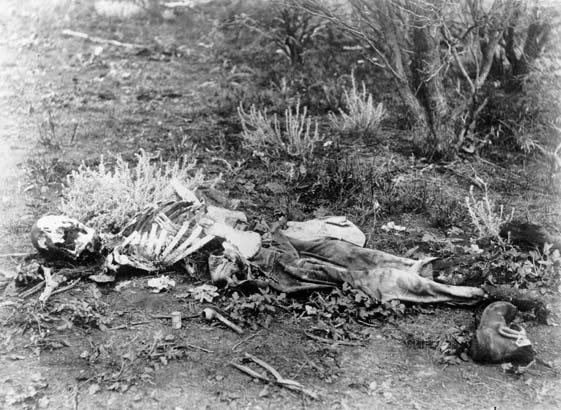|
Angakkuq
The Inuit angakkuq (plural: ''angakkuit'', Inuktitut syllabics ᐊᖓᑦᑯᖅ or ᐊᖓᒃᑯᖅ; Inuvialuktun: '; , pl. ''angakkut''; Iñupiaq: ''aŋatkuq'') is an intellectual and spiritual figure in Inuit culture who corresponds to a medicine man. Other cultures, including Alaska Natives, have traditionally had similar spiritual mediators, although the Alaska Native religion has many forms and variants. Role in Inuit society Both women, such as Uvavnuk, and men could become an angakkuq, although it was rarer for women to do so. The process for becoming an angakkuq varied widely. The son of a current angakkuq might be trained by his father to become one as well. A shaman might make a prophecy that a particular infant would become a prophet in adulthood. Alternatively, a young man or woman who exhibited a predilection or power that made them stand out might be trained by an experienced mentor. There are also instances of angakkuit claiming to have been called to the role ... [...More Info...] [...Related Items...] OR: [Wikipedia] [Google] [Baidu] |
Alaska Native Religion
Traditional Alaskan Native religion involves mediation between people and spirits, souls, and other immortal beings. Such beliefs and practices were once widespread among Inuit (including Iñupiat), Yupik, Aleut, and Northwest Coastal Indian cultures, but today are less common. Merkur 1985: 4 They were already in decline among many groups when the first major ethnological research was done. For example, at the end of the 19th century, Sagdloq, the last medicine man among what were then called in English, "Polar Eskimos", died; he was believed to be able to travel to the sky and under the sea, and was also known for using ventriloquism and sleight-of-hand. Merkur 1985:134 The term "Eskimo" has fallen out of favour in Canada and Greenland, where it is considered pejorative and "Inuit" is used instead. However, "Eskimo" is still considered acceptable among some Alaska Natives of Yupik and Inupiaq (Inuit) heritage and is at times preferred over "Inuit" as a collective reference. ... [...More Info...] [...Related Items...] OR: [Wikipedia] [Google] [Baidu] |
Inuit Religion
Inuit religion is the shared spiritual beliefs and practices of the Inuit, an indigenous people from Alaska, northern Canada, Greenland, and parts of Siberia. Their religion shares many similarities with some Alaska Native religions. Traditional Inuit religious practices include animism and shamanism, in which spiritual healers mediate with spirits. Today many Inuit follow Christianity (with 71 percent of Canadian Inuit identifying as Christian ); however, traditional Inuit spirituality continues as part of a living, oral tradition and part of contemporary Inuit society. Inuit who balance indigenous and Christian theology practice religious syncretism. Inuit cosmology provides a narrative about the world and the place of people within it. Rachel Qitsualik-Tinsley writes: Traditional stories, rituals, and taboos of the Inuit are often precautions against dangers posed by their harsh Arctic environment. Knud Rasmussen asked his guide and friend Aua, an ''angakkuq'' (spiritual h ... [...More Info...] [...Related Items...] OR: [Wikipedia] [Google] [Baidu] |
Inuit
Inuit (singular: Inuk) are a group of culturally and historically similar Indigenous peoples traditionally inhabiting the Arctic and Subarctic regions of North America and Russia, including Greenland, Labrador, Quebec, Nunavut, the Northwest Territories, Yukon (traditionally), Alaska, and the Chukotsky District of Chukotka Autonomous Okrug. The Inuit languages are part of the Eskaleut languages, also known as Inuit-Yupik-Unangan, and also as Eskimo–Aleut. Canadian Inuit live throughout most of Northern Canada in the territory of Nunavut, Nunavik in the northern third of Quebec, the Nunatsiavut in Labrador, and in various parts of the Northwest Territories and Yukon (traditionally), particularly around the Arctic Ocean, in the Inuvialuit Settlement Region. These areas are known, by Inuit Tapiriit Kanatami and the Government of Canada, as Inuit Nunangat. In Canada, sections 25 and 35 of the Constitution Act of 1982 classify Inuit as a distinctive group of Abo ... [...More Info...] [...Related Items...] OR: [Wikipedia] [Google] [Baidu] |
Uvavnuk
Uvavnuk was an Inuit, Inuk woman born in the 19th century, now considered an oral poetry, oral poet. The story of how she became an ''angakkuq'' (Medicine man, spiritual healer), and the song that came to her, were collected by European explorers of Arctic Canada in the early 1920s. Her shamanistic poem-song, best known as "Earth and the Great Weather", has been anthologised many times. Background Uvavnuk's story was written down by the explorer Knud Rasmussen, who grew up speaking Greenlandic language, Greenlandic, which is closely related to Inuktitut. Her story was told by Aua (angakkuq), Aua, a cousin of her son Niviatsian, both of whom were also spiritual healers. Aua acted as an Informant (linguistics), informant for Rasmussen, who was collecting cultural material such as folktales and songs. The two men met in February 1922, in the vicinity of Hoppner Inlet, Lyon Inlet, north of Hudson Bay. Given this location, Uvavnuk has been considered an ''Iglulingmiut'', a person from ... [...More Info...] [...Related Items...] OR: [Wikipedia] [Google] [Baidu] |
Sedna (mythology)
Sedna (, previously ''Sedna'' or ''Sidne'') is the goddess of the sea and marine animals in Inuit religion, also known as the Mother of the Sea or Mistress of the Sea. The story of Sedna, which is a creation myth, describes how she came to rule over Adlivun, the Inuit equivalent of the underworld. In sculptures, Sedna is often depicted with the head and upper body of a woman and the tail of a marine mammal, similar to a mermaid. Other names Sedna is known as Arnakuagsak or Arnaqquassaaq in parts of Greenland. She is called Sassuma Arnaa ('Mother of the Deep') in West Greenlandic and Nerrivik ('Table', Inuktun) or Nuliajuk (Kivalliq Region, Nunavut, Canada). She is sometimes known by other names by different Inuit groups such as Arnapkapfaaluk ('Big Bad Woman') of the Copper Inuit from the Coronation Gulf area and Takánakapsâluk or Takannaaluk (Igloolik). In Killiniq, Labrador, she was referred to as 'Old-woman-who-lived-in-the-sea'. Myth More than one version of the S ... [...More Info...] [...Related Items...] OR: [Wikipedia] [Google] [Baidu] |
Yupik Culture
The Yupik (; ) are a group of Indigenous or Aboriginal peoples of western, southwestern, and southcentral Alaska and the Russian Far East. They are related to the Inuit and Iñupiat. Yupik peoples include the following: * Alutiiq, or Sugpiaq, of the Alaska Peninsula and coastal and island areas of southcentral Alaska. * Yupʼik or Central Alaskan Yupʼik of the Yukon–Kuskokwim Delta, the Kuskokwim River, and along the northern coast of Bristol Bay as far east as Nushagak Bay and the northern Alaska Peninsula at Naknek River and Egegik Bay in Alaska. * Siberian Yupik, including Naukan, Chaplino,Achirgina-Arsiak, Tatiana"Northeastern Siberian: Yupik (Asiatic Eskimo)."''Alaska Native Collections.'' 1996. Retrieved 20 July 2012. and—in a linguistic capacity—the Sirenik of the Russian Far East and St. Lawrence Island in western Alaska. Population The Yupʼik people are by far the most numerous of the various Alaska Native groups. They speak the Central Alaskan Yupʼik lan ... [...More Info...] [...Related Items...] OR: [Wikipedia] [Google] [Baidu] |
Suicide In Canada
According to the latest available data, Statistics Canada estimates 4,157 suicides took place in Canada in 2017, making it the 9th leading cause of death, between Alzheimer's disease (8th) and cirrhosis and other liver diseases (10th). In 2009, there were an estimated 3,890 suicide deaths.Statistics Canada. ''Suicides and rate of suicide according to sex and age'', Ottawa, ON: Statistics Canada; 2017. http://www.statcan.gc.ca/tables-tableaux/sum-som/l01/cst01/hlth66a-eng.htm. (Accessed 2011 Jan 13).Statistics Canada. ''Leading causes of death, total population, by age group'', Ottawa, ON: Statistics Canada; 2017. https://www150.statcan.gc.ca/t1/tbl1/en/tv.action?pid=1310039401 (Accessed 2019 May 31). According to Statistics Canada, in the period from 1950 to 2009, males died by suicide at a rate three times that of women. The much higher rate of male suicide is a long-term pattern in Canada. At all points in time over the past 60 years, males have had higher rates of suicide th ... [...More Info...] [...Related Items...] OR: [Wikipedia] [Google] [Baidu] |
Bernard Saladin D'Anglure
Bernard Saladin d'Anglure (May 1936 – 13 February 2025) was a Canadian anthropologist and ethnographer. His work primarily concerned itself with the Inuit of Northern Canada, especially practices of shamanism and conceptions of gender. As an anthropological theorist, he studied under the structuralist Claude Lévi-Strauss, but became most recognized for his innovative methodology and elaboration of the concept of the " third sex". He spoke French, English and Inuktitut fluently. He was Professor Emeritus (Retired) at the Université Laval. Biographical information D'Anglure was born in France in May 1936. At the age of 19, d'Anglure came to Canada through a bursary from the Fondation Nationale des Bourses Zellidja, and travelled throughout Northern Quebec, spending several weeks in the settlement of Quaaqtaq, Nunavik. Upon his return, he began a master's degree in anthropology at the Université de Montréal, receiving the degree in 1964. D'Anglure completed a Ph.D. in ethnol ... [...More Info...] [...Related Items...] OR: [Wikipedia] [Google] [Baidu] |
Ethnography
Ethnography is a branch of anthropology and the systematic study of individual cultures. It explores cultural phenomena from the point of view of the subject of the study. Ethnography is also a type of social research that involves examining the behavior of the participants in a given social situation and understanding the group members' own interpretation of such behavior. As a form of inquiry, ethnography relies heavily on participant observation, where the researcher participates in the setting or with the people being studied, at least in some marginal role, and seeking to document, in detail, patterns of social interaction and the perspectives of participants, and to understand these in their local contexts. It had its origin in social and cultural anthropology in the early twentieth century, but has, since then, spread to other social science disciplines, notably sociology. Ethnographers mainly use Qualitative research, qualitative methods, though they may also include ... [...More Info...] [...Related Items...] OR: [Wikipedia] [Google] [Baidu] |
Anthropology
Anthropology is the scientific study of humanity, concerned with human behavior, human biology, cultures, society, societies, and linguistics, in both the present and past, including archaic humans. Social anthropology studies patterns of behaviour, while cultural anthropology studies cultural meaning, including norms and values. The term sociocultural anthropology is commonly used today. Linguistic anthropology studies how language influences social life. Biological anthropology, Biological (or physical) anthropology studies the biology and evolution of Human evolution, humans and their close primate relatives. Archaeology, often referred to as the "anthropology of the past," explores human activity by examining physical remains. In North America and Asia, it is generally regarded as a branch of anthropology, whereas in Europe, it is considered either an independent discipline or classified under related fields like history and palaeontology. Etymology The abstract noun ''wikt ... [...More Info...] [...Related Items...] OR: [Wikipedia] [Google] [Baidu] |







